Xanthelasma on the Forehead? A Guide to Its True Locations
Xanthelasma on the Forehead? A Guide to Its True Locations
It is a moment of quiet alarm. You are looking in the mirror, perhaps after a shower or at the end of a long day, when you notice a new mark on your skin. It is a small, slightly yellowish bump, and it is on your forehead. Your mind immediately races, scrolling through bits of information you have seen online. You remember reading about xanthelasma, those yellow cholesterol deposits, and a wave of concern washes over you. Is this it? Is it possible to have xanthelasma on your forehead?
This confusion is incredibly common. In the age of instant information, we often become digital detectives, trying to diagnose every new spot and blemish. But when it comes to a condition as specific as xanthelasma, location is everything. It is the single most important clue to a correct identification. Understanding where xanthelasma truly appears, and why, is the first step in moving from a state of anxious speculation to one of empowered clarity.
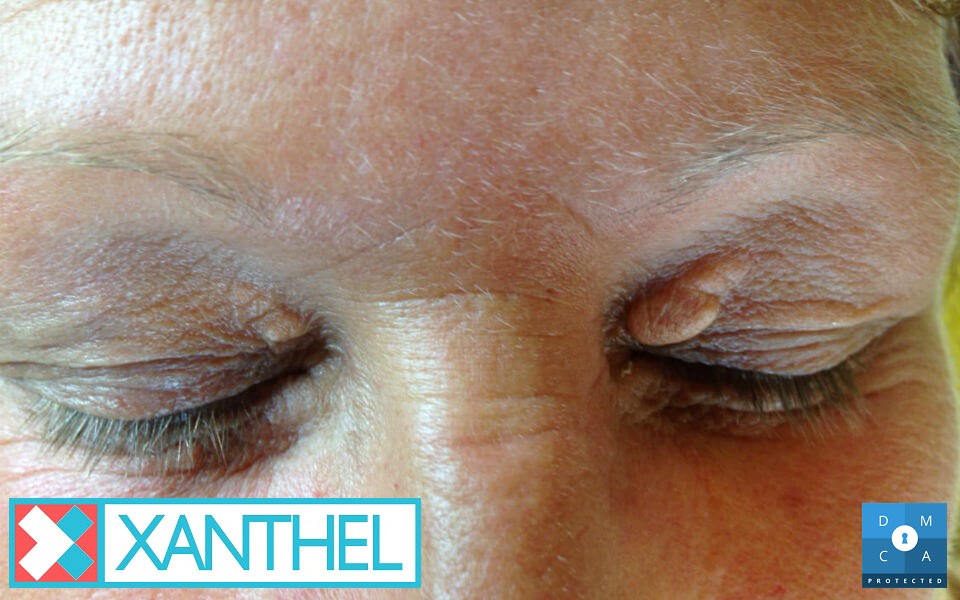
The Defining Characteristic: The Eyelid Connection
Let’s address the central question directly and unequivocally. True xanthelasma does not appear on the forehead. Its full medical name, xanthelasma palpebrarum, holds the key. “Palpebrarum” is Latin for “of the eyelid.” The condition is, by its very definition, linked to the delicate skin on and immediately around the eyes. This is not just a matter of common occurrence, it is a matter of diagnostic criteria.
Why this specific location? The reason is biological. The skin of the eyelids is the thinnest on the entire human body. It has a uniquely dense and fragile network of tiny blood vessels, or capillaries, that lie very close to the surface. When the body has an excess of circulating lipids, especially LDL cholesterol, these delicate capillaries can become “leaky.” This allows fatty particles to seep into the surrounding tissue. Because the skin is so thin here, this accumulation of fat within immune cells quickly becomes visible as a yellowish plaque. The forehead, by contrast, has much thicker skin, with a more robust subcutaneous layer, making it a highly unlikely site for this specific process to become visible. So, the very definition of xanthelasma palpebrarum ties it inextricably to the eyelids.
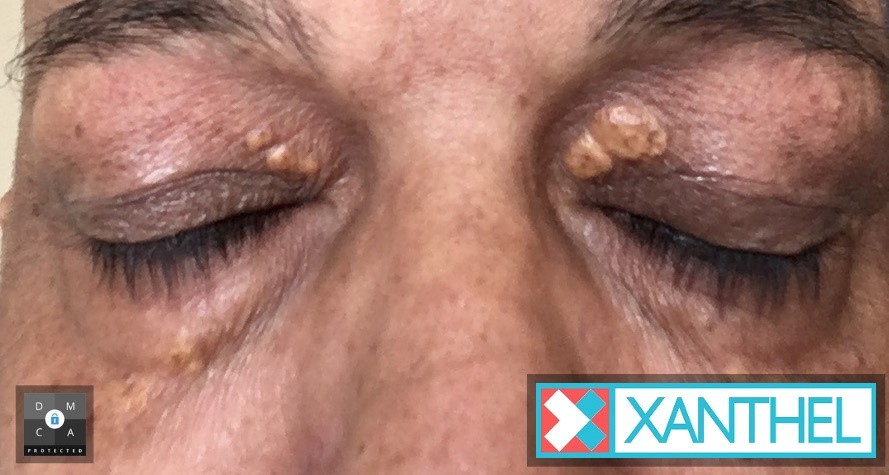
If Not Xanthelasma, What Is This Bump on My Forehead?
If the yellowish bump on your forehead is not xanthelasma, then what could it be? The skin is a complex organ, and the forehead is a common site for a variety of completely different benign growths. It is crucial to remember that only a doctor or dermatologist can provide an accurate diagnosis, but understanding the possibilities can help contextualize your concern.
Some common bumps that can appear on the forehead include:
- Milia: These are tiny, hard, white or yellowish cysts filled with keratin, a protein found in skin. They are very common, completely harmless, and often feel like a tiny, hard grain of sand under the skin.
- Sebaceous Cysts: These are larger, dome-shaped lumps that are also filled with keratin. They are typically skin-colored or yellowish and are much larger and deeper than milia.
- Lipomas: These are soft, doughy, benign tumors composed of fat cells. They are usually found in the fatty layer beneath the skin and are slow-growing and painless. While they are made of fat, this is different from the cholesterol-based deposits of xanthelasma.
- Pilar Cysts: These cysts form from a hair follicle and are most common on the scalp, but can certainly appear on the forehead. They are smooth, firm bumps filled with keratin.
The key takeaway is that a bump on the forehead, even a yellowish one, is far more likely to be one of these common conditions than it is to be a misplaced xanthelasma.
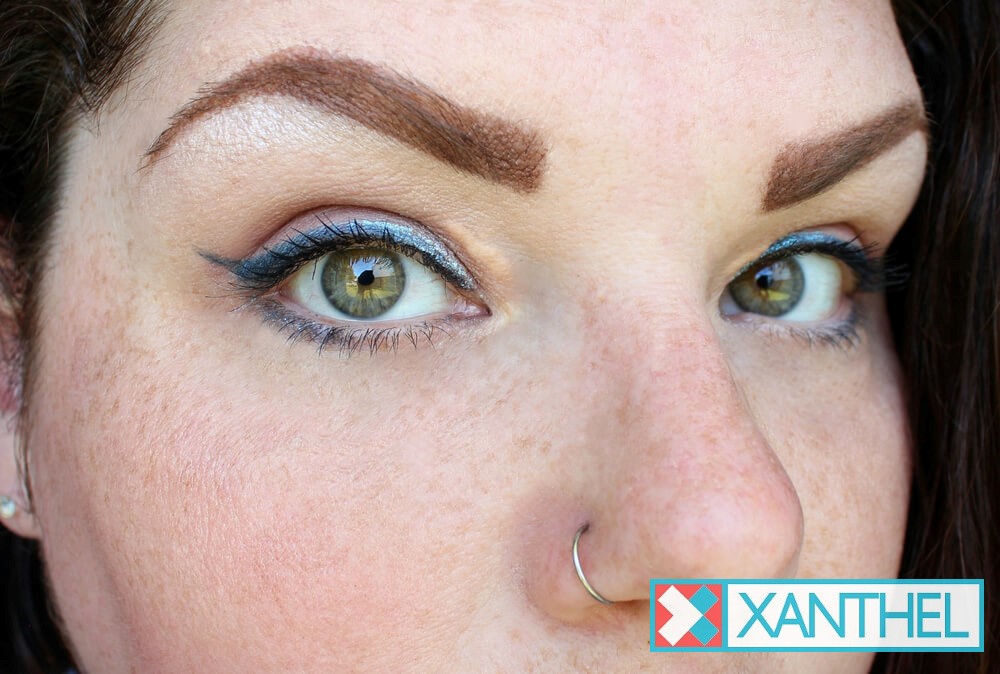
Understanding the Broader Family: Xanthomas and Their Locations
To add another layer of clarity, it is helpful to understand that xanthelasma is actually one specific type of a broader category of skin growths called xanthomas. All xanthomas are caused by the deposition of lipids in the skin, but different types have a strong preference for different parts of the body, often signaling different underlying health issues.
For example, “eruptive xanthomas” are small, yellowish-red bumps that can appear suddenly in crops on the buttocks, shoulders, or the backs of arms and legs, and are often associated with very high triglycerides. “Tuberous xanthomas” are larger, firmer nodules that tend to develop over pressure points like the elbows and knees. “Tendinous xanthomas” are hard lumps that form directly on tendons, such as the Achilles tendon or the knuckles of the hands.
This illustrates a crucial medical principle: location matters. A dermatologist seeing a yellow plaque on an eyelid immediately thinks of xanthelasma, while a cluster of bumps on the buttocks would point them toward a different diagnosis. The location of the broader family of skin growths called xanthomas is a primary diagnostic clue.
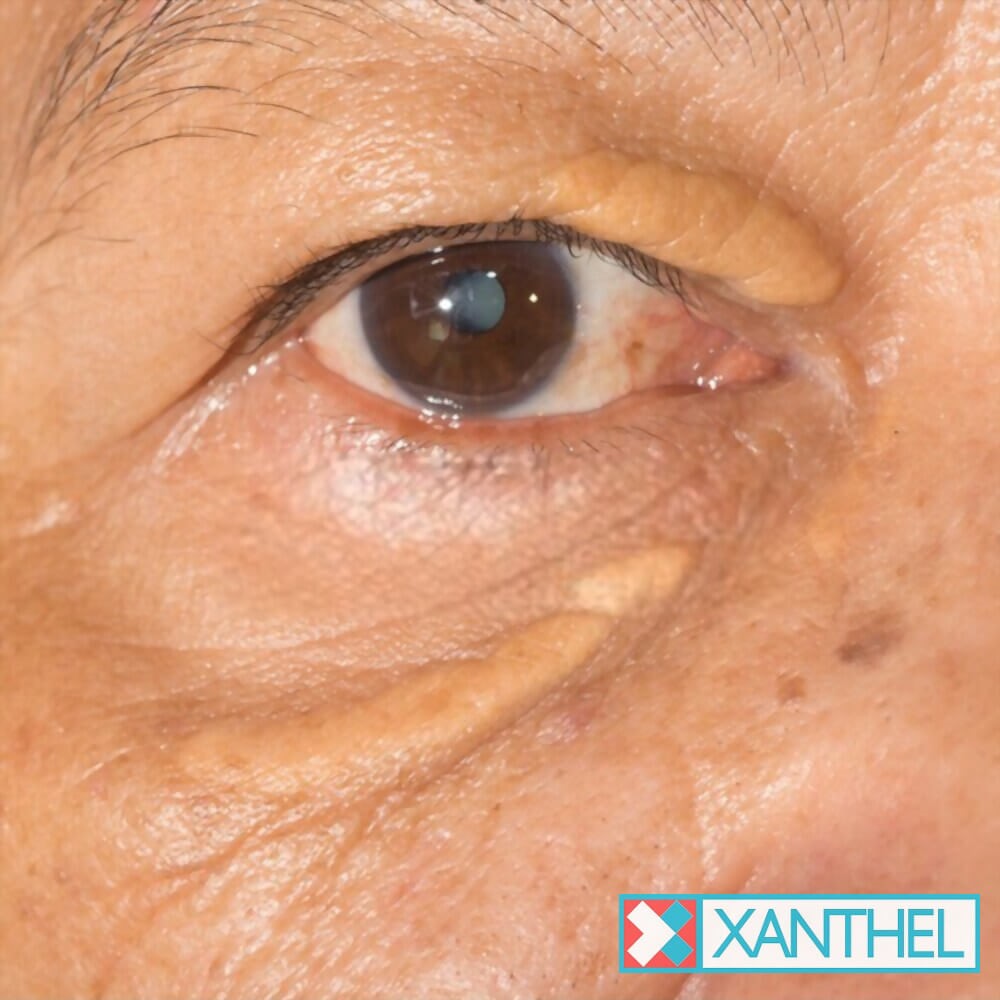
The Emotional Impact of Location and Self-Diagnosis
The anxiety of finding a new skin growth is real, regardless of where it appears. The journey of late-night internet searches, comparing your own skin to photos online, can be a stressful and misleading one. You may feel a jolt of fear if you misidentify a harmless cyst on your forehead as a sign of high cholesterol, or conversely, you might dismiss a true xanthelasma on your eyelid as just a “skin tag.”
This is why understanding the correct location is so empowering. It allows you to filter the noise and focus your concern appropriately. A bump on your forehead warrants a professional look, but it likely does not point to the specific cholesterol-related issues that xanthelasma does. A plaque on your eyelid, however, should be treated as a more urgent signal to get your blood lipids checked. This knowledge helps you channel your worry into productive action.

The Unifying Factor: The Critical Importance of a Medical Diagnosis
We have established that xanthelasma belongs on the eyelid, and a forehead bump is likely something else entirely. But the ultimate conclusion is the same for both scenarios. There is no substitute for a professional evaluation. You should never rely on self-diagnosis for any new or changing skin growth.
Whether you have a suspicious yellow plaque on your eyelid or an unknown bump on your forehead, the correct course of action is to schedule an appointment with a doctor or a dermatologist. They have the training and tools to examine the growth, understand its characteristics, and provide a definitive diagnosis. This step is not just about identifying the bump, it is about understanding what it means for your overall health and getting the right guidance. The only definitive path to clarity is a professional medical diagnosis, which moves you from a state of uncertainty to a position of knowledge and control.
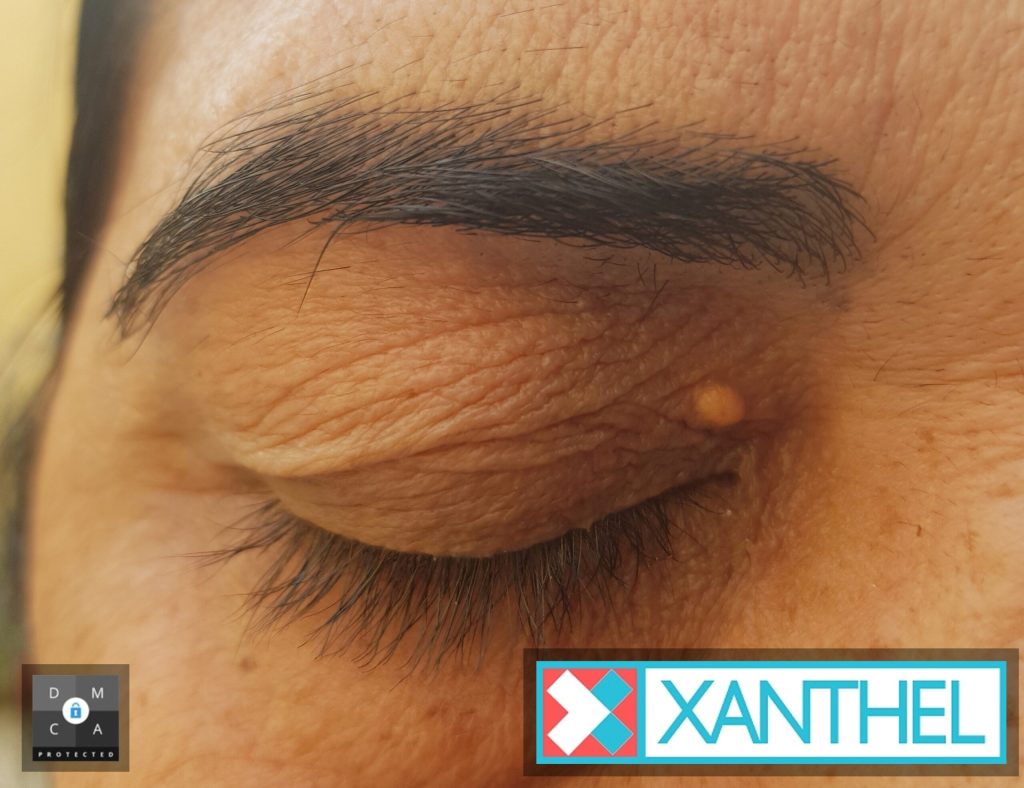
Xanthel ® – Helping With The Cosmetic Appearance Of Xanthelasma
Once you have that professional clarity, and if the diagnosis confirms that you do have xanthelasma on your eyelids, you can then confidently address the cosmetic aspect of the condition. After taking the essential steps to manage your health with your doctor, you can turn your attention to the reflection in the mirror. It is time to discover Xanthel ® Gel, a professional-grade cosmetic gel expertly formulated to visibly diminish the appearance of xanthelasma plaques.
You do not have to let these yellow marks define your confidence. Xanthel ® Gel offers a direct, targeted approach to cosmetic improvement that you can use in the privacy of your own home. Its selectively formulated composition is engineered to work on the aesthetic appearance of the plaques, helping to restore the skin’s natural, clear look. For many, a single, straightforward application is all that is needed to see a dramatic and gratifying cosmetic change.
Created to be effective across all skin tones, Xanthel ® Gel is your specialized ally. This is not a medical treatment, but a dedicated cosmetic solution for anyone seeking to visibly refine the skin around their eyes. Your kit is delivered with free worldwide delivery, bringing the path to a clearer appearance directly and discreetly to you. Choose clarity. Choose confidence. Choose the targeted cosmetic power of Xanthel ® Gel and begin the journey back to seeing your own, familiar, confident face in the mirror.

Xanthel ® Cosmetic Gel
A focused cosmetic gel formulated specifically to improve the appearance of eyelids bearing xanthelasma plaques. Its composition is selectively designed for cosmetic impact across all skin tones, offering a straightforward, at-home option for managing the look of these blemishes.
A Singular Application
The power of Xanthel ® is in its simplicity. It is formulated for a single, one-time cosmetic application. This focused approach is designed to visibly diminish the appearance of xanthelasma plaques, removing the need for daily or repeat uses.
Legal: This product is for cosmetic use only. This product is not intended to diagnose, treat, cure, or prevent any medical condition. Consult a healthcare professional regarding any skin condition.